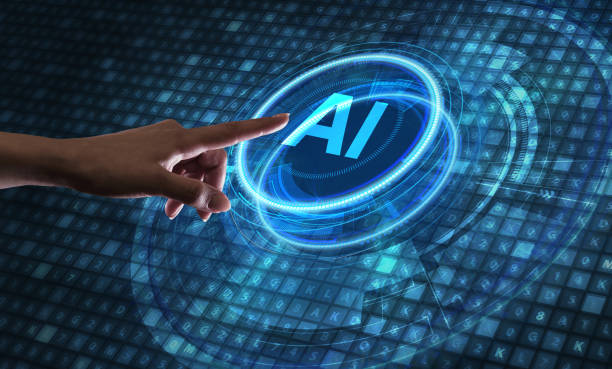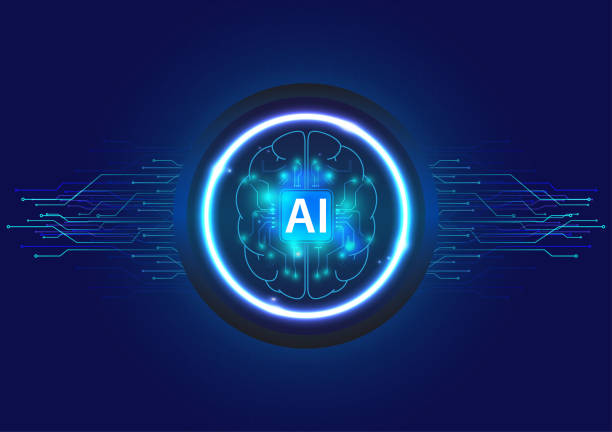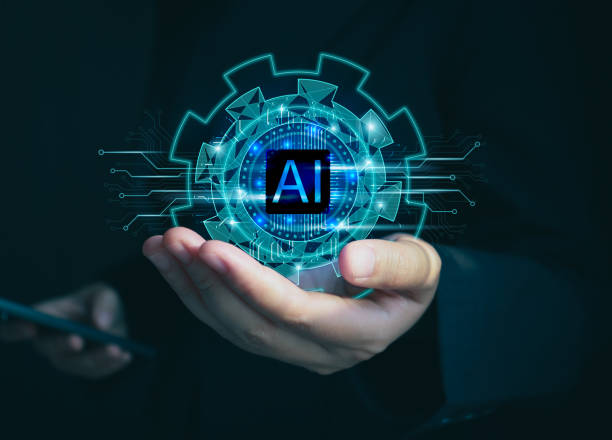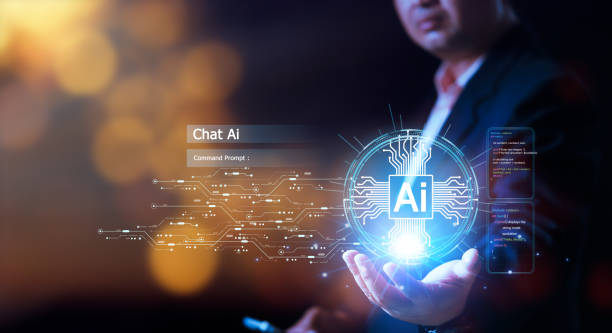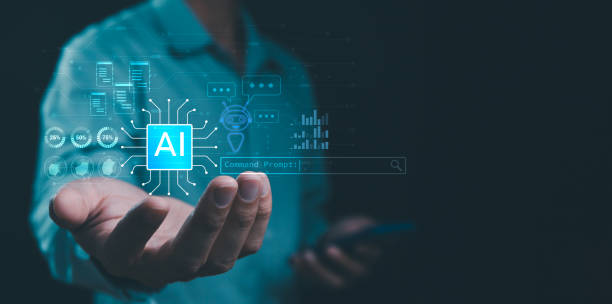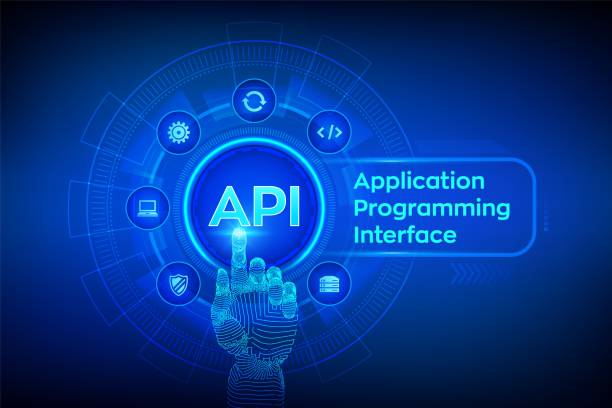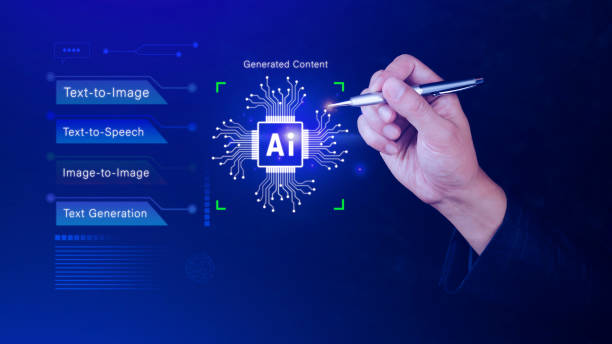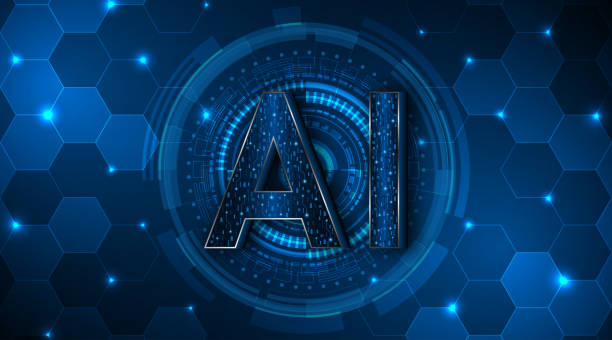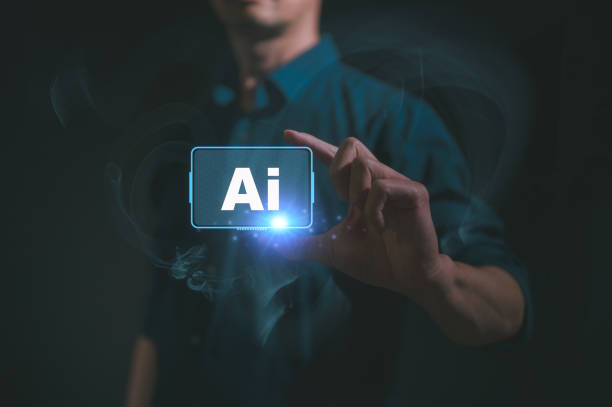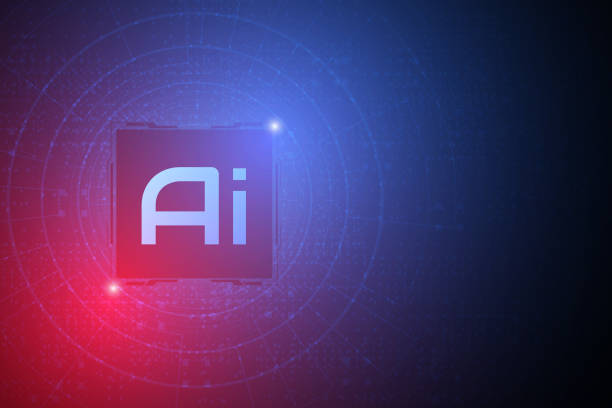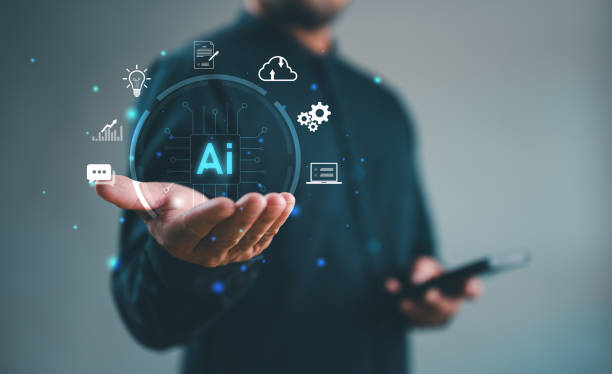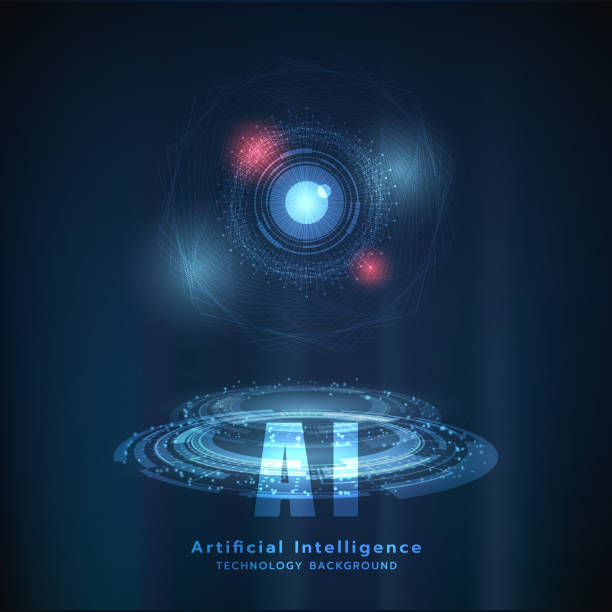What is an Artificial Intelligence Robot? Definition and Basic Concepts
#Artificial Intelligence Robot is a combination of two important fields of technology: #robotics and #artificial intelligence.
In simple terms, an AI robot is a physical or virtual machine capable of performing tasks that typically require human intelligence.
These tasks can include learning, reasoning, problem-solving, pattern recognition, and even creativity.
To better understand this concept, it is necessary to first define robotics and artificial intelligence separately.
Robotics is a branch of engineering that deals with the design, construction, operation, and application of robots.
Robots are usually machines capable of performing repetitive, dangerous, or difficult tasks for humans.
Artificial intelligence (AI) is a branch of computer science that deals with the development of systems that can exhibit intelligent behavior.
This behavior includes learning from data, logical reasoning, solving complex problems, and understanding natural language.
The AI robot, by integrating these two fields, seeks to create machines that are not only capable of performing physical tasks but can also make decisions, learn, and adapt to different conditions using artificial intelligence.
In fact, an AI robot is more than just a programmed machine; these robots are capable of learning and evolving and can perform complex tasks independently.
These abilities have made AI robots a powerful tool in various industries, including manufacturing, services, healthcare, and even everyday affairs.
Are you worried about losing customers because you don’t have a professional online store?
Forget those worries with Rasawb’s online store design!
✅ Significant increase in sales and visitor-to-customer conversion rate
✅ Professional and user-friendly design that earns customer trust
⚡ Get free consultation from Rasawb
Main Components of an Artificial Intelligence Robot
An AI robot consists of various components, each of which plays an important role in its overall performance.
These components include:
- Sensors Sensors allow the robot to collect information from its surrounding environment.
This information can include visual data (via camera), audio (via microphone), tactile (via touch sensors), and data related to position and movement (via accelerometer and gyroscope). - Processor The processor is the brain of the robot and is responsible for processing information collected by the sensors and making decisions based on it.
The processor can be a central computer or a distributed system of processors.
Artificial intelligence algorithms are executed in this section. - Actuators Actuators allow the robot to move in its surrounding environment and interact with it.
These actuators can include motors, pumps, and other devices capable of creating movement. - AI Software This section includes artificial intelligence algorithms and models that allow the robot to learn, reason, make decisions, and adapt to its environment.
This software can include neural networks, machine learning algorithms, and logical reasoning systems. - Power Source The robot needs energy to perform its activities.
The power source can be a battery, a direct electrical connection, or a renewable energy system.
Click here to preview your posts with PRO themes ››
The interaction between these components allows the AI robot to perform complex tasks that were previously only possible by humans.
With the advancement of technology, the components of these robots are also evolving, and smarter and more efficient robots are emerging.
Types of Artificial Intelligence Robots and Their Applications
There are different types of AI robots, each designed for specific applications.
Some of the most common types of AI robots include:
- Industrial Robots These robots are used in factories and production lines to perform repetitive, heavy, and dangerous tasks.
Industrial robots can automatically assemble parts, perform welding, and move materials. - Service Robots These robots are designed to provide services to humans in various environments.
Service robots can help care for patients in hospitals, assist with guest reception in hotels, and serve food in restaurants. - Military Robots These robots are used to perform dangerous tasks in war zones.
Military robots can help identify and neutralize bombs, patrol dangerous areas, and even conduct combat operations. - Space Robots These robots are used to perform exploratory tasks in space.
Space robots can help collect soil and rock samples from other planets, explore unknown environments, and repair and maintain space equipment. - Home Robots These robots are designed to help with everyday tasks at home.
Home robots can help clean the house, garden, and even care for children and the elderly.
The applications of AI robots are expanding day by day, and these robots are becoming an integral part of our lives.
Artificial intelligence has the potential to improve the quality of human life and solve important global challenges.
| Robot Type | Application |
|---|---|
| Industrial | Assembly, welding, material handling |
| Service | Patient care, guest reception, food service |
| Military | Bomb detection, patrolling, combat operations |
| Space | Exploration, sample collection, equipment repair |
| Home | Cleaning, gardening, caregiving |
Benefits of Using Artificial Intelligence Robots
The use of AI robots has many benefits that can lead to improved efficiency, reduced costs, and increased quality in various industries.
Some of the most important benefits of these robots include:
- Increased Productivity AI robots can work continuously and without fatigue, which leads to increased productivity and reduced task completion time.
- Reduced Costs The use of AI robots can reduce labor costs and prevent human errors, which leads to lower overall costs.
- Improved Quality AI robots can perform tasks with greater accuracy and consistency than humans, which leads to improved quality of products and services.
- Increased Safety AI robots can perform dangerous tasks instead of humans, which reduces potential risks and injuries.
- Flexibility AI robots can quickly adapt to changes in the environment and working conditions, which allows for the performance of diverse and complex tasks.
In addition, AI robots can help collect and analyze data, which enables better decision-making and process improvement.
Given these benefits, the use of AI robots can help companies and organizations become more competitive and achieve greater success.
AI robots, by providing innovative solutions, play an important role in the development of various industries.
Are you worried about the low conversion rate of your online store and not getting the sales you want?
Rasawb is your expert solution for having a successful online store.
✅ Significant increase in conversion rate and sales
✅ Professional and user-friendly design to satisfy customers
⚡ Ready for a transformation in online sales? Get a free consultation!
Challenges of Implementing Artificial Intelligence Robots
Despite the many benefits, implementing AI robots also comes with challenges that need to be addressed.
Some of these challenges include:
- High Cost Purchasing and implementing AI robots can be expensive, especially for small and medium-sized businesses.
- Technical Complexity Setting up and maintaining AI robots requires technical expertise and may require hiring specialists.
- Ethical Issues The use of AI robots can raise new ethical issues, such as accountability for robot decisions and data privacy.
- Resistance to Change Some people may resist the use of AI robots, especially if they feel their jobs are at risk.
- Cybersecurity AI robots may be vulnerable to cyberattacks, which can lead to disruption of performance and data theft.
To overcome these challenges, companies and organizations need to have careful planning and use the expertise of specialists.
Also, they must pay special attention to ethical and security issues and talk transparently and honestly with employees and the community about this issue.
AI robots can create major transformations in various industries, but to fully exploit this potential, the challenges related to its implementation must also be addressed.
The responsible use of #AI_Robot can help create a better future for everyone.
The Future of Artificial Intelligence Robots and Their Impact on Our Lives
The future of AI robots looks very bright and exciting.
With the advancement of technology, smarter, more efficient, and more flexible robots are emerging that can play an important role in various industries and in our daily lives.
It is predicted that in the future, AI robots will play a prominent role in the following areas:
- Healthcare AI robots can assist surgeons in performing complex operations, assist nurses in caring for patients, and assist the elderly in performing daily tasks.
- Education AI robots can help students as private tutors, provide personalized lessons, and provide immediate feedback.
- Transportation AI robots can drive self-driving cars, manage traffic, and improve public transportation systems.
- Manufacturing AI robots can automate production lines, improve product quality, and reduce costs.
- Customer Service AI robots can answer customer questions, solve their problems, and provide 24-hour support services.
However, it should also be noted that the development of AI robots can also bring challenges, such as job losses and increased economic inequality.
To face these challenges, governments and organizations need to adopt appropriate policies and pay special attention to training and retraining the workforce.
AI robots have a high potential to improve human lives, but to fully exploit this potential, the challenges related to it must also be addressed.
AI robots, with proper and responsible use, can help build a better future for everyone.
AI robots should serve humans, not the other way around.
Machine Learning and Its Role in Artificial Intelligence Robots
Machine Learning is an important subfield of artificial intelligence that plays a vital role in the performance of AI robots.
In short, machine learning allows robots to learn from data and improve their performance without explicit programming.
In AI robots, machine learning is used for the following:
- Pattern Recognition Robots can use machine learning algorithms to recognize patterns in data and make decisions based on them.
For example, a robot can use image data to recognize different objects and avoid them. - Prediction Robots can use historical data to predict future events.
For example, a robot can use traffic data to choose the best route to reach a destination. - Decision Making Robots can use machine learning algorithms to make better decisions in different situations.
For example, a robot can use market data to determine the best time to buy and sell stocks. - Control Robots can use machine learning algorithms to control their movements and perform complex tasks.
For example, a robot can use data about the surrounding environment to maintain its balance and prevent falls.
There are different algorithms for machine learning, each suitable for specific applications.
Some of the most common machine learning algorithms include: neural networks, decision trees, support vector machines, and clustering algorithms.
Choosing the right algorithm depends on the type of data and the task that the robot needs to perform.
AI robots, using machine learning, can continuously improve their performance and adapt to new conditions.
This capability has made AI robots a powerful and flexible tool.
#AI_Robot is changing our world.
| Machine Learning Algorithm | Application in AI Robots |
|---|---|
| Neural Networks | Pattern Recognition, Prediction |
| Decision Trees | Decision Making, Classification |
| Support Vector Machines | Classification, Regression |
| Clustering Algorithms | Pattern Recognition, Data Analysis |
Artificial Intelligence Robots in Industry
Industry is one of the areas where AI robots have had a significant impact.
Intelligent industrial robots are able to perform complex and repetitive tasks with greater accuracy and speed, which leads to increased productivity, reduced costs, and improved product quality.
Some of the applications of AI robots in industry include:
- Parts Assembly Intelligent robots can assemble different parts with high accuracy and speed, which increases production speed and reduces errors.
- Welding Intelligent robots can perform welding with high accuracy and quality, which increases the strength and durability of products.
- Quality Inspection Intelligent robots can automatically inspect products and identify their defects, which improves product quality and reduces waste.
- Packaging Intelligent robots can automatically package products, which increases packaging speed and reduces costs.
- Transportation Intelligent robots can transport products and raw materials inside the factory, which increases transportation speed and reduces hazards.
In addition, AI robots can help collect and analyze data, which allows for optimizing production processes and improving the overall performance of the factory.
By using AI robots, companies can become more competitive and achieve greater success.
AI robots in industry are creating great transformations.
#AI_Robot is shaping the future of industry.
Are you tired of your online store having visitors but no sales? Rasawb solves your main problem by designing professional online stores!
✅ Significant increase in sales with targeted design
✅ Perfect user experience for your customers
⚡ Get a free consultation!
Ethical Issues Related to Artificial Intelligence Robots
The development and use of AI robots raise important ethical issues that need to be addressed.
Some of these issues include:
- Accountability If an AI robot makes a decision that leads to damage, who will be responsible? Is the robot manufacturer, the robot owner, or the robot itself responsible?
- Privacy AI robots typically collect a lot of information about users.
How should this information be protected? Should users have control over what information is collected about them? - Bias Artificial intelligence algorithms may have biases that exist in the training data.
These biases can lead to unfair decisions.
How can bias be prevented in artificial intelligence algorithms? - Job Security With the increased use of AI robots, many jobs are at risk.
How can this be prevented and help workers learn new skills? - Control Who should control AI robots? Should an international organization be established to oversee the development and use of AI robots?
To address these ethical issues, experts, policymakers, and the public need to work together and find appropriate solutions.
It should be noted that AI robots are a powerful tool that can be used for good or evil.
Responsible use of #AI_Robot can help create a better future for everyone.
AI robots should serve human values.
How to Learn Artificial Intelligence Robotics?
Learning AI robots is a multifaceted process that involves understanding the basic concepts of robotics, artificial intelligence, and programming.
To get started, you can use the following resources:
- Online Courses Many universities and educational institutions offer online courses in the field of robotics and artificial intelligence.
These courses can help you learn basic concepts and develop practical skills. - Books There are many books in the field of robotics and artificial intelligence that can help you expand your knowledge in this field.
- Practical Projects The best way to learn AI robots is to do practical projects.
You can start by building simple robots and gradually do more complex projects. - Associations and Groups Membership in robotics and artificial intelligence associations and groups can help you connect with other people in this field and learn from their experiences.
- Online Resources There are many websites and blogs in the field of robotics and artificial intelligence that can help you learn new information and keep up to date with the latest developments in this field.
To succeed in learning AI robots, you must be patient and persistent and constantly strive.
Also, you should note that learning AI robots is an ongoing process and there is always something new to learn.
#AI_Robot is a fascinating and challenging field.
With effort and perseverance, you can succeed in this field.
Remember that AI robots are a tool for building the future.
Frequently Asked Questions
| Row | Question | Answer |
|---|---|---|
| 1 | What is an Artificial Intelligence Robot? | An AI robot is a machine capable of understanding, reasoning, learning, and problem-solving, and can perform complex tasks with relative autonomy. |
| 2 | What are the most important applications of AI robots? | Main applications include industrial manufacturing, customer service (chatbots), medicine and surgery, self-driving transport, space exploration, and military affairs. |
| 3 | What is the main difference between an AI robot and a regular robot? | A regular robot only follows programmed instructions, while an AI robot can learn from data, make decisions, and adapt to new environments. |
| 4 | How do AI robots learn? | They learn through machine learning algorithms (such as deep learning, reinforcement learning) and processing vast amounts of data, identifying patterns, and improving their performance. |
| 5 | Can AI robots have emotions? | Currently, AI robots do not have real emotions in the human sense. They can mimic or recognize emotions, but do not understand or experience them. |
| 6 | What are the current limitations of AI robots? | Limitations include the need for large amounts of data, inability to understand abstract concepts, lack of real creativity, ethical issues, and challenges in generalizing to new environments. |
| 7 | What is the role of artificial intelligence in the development of Humanoid robots? | Artificial intelligence helps humanoid robots walk, maintain balance, understand the surrounding environment, interact with humans, and perform complex tasks. |
| 8 | How is the future of AI robots predicted? | It is predicted that AI robots will become smarter, more autonomous, and capable of performing more complex tasks in everyday life and industry, and their interaction with humans will increase. |
| 9 | Can AI robots replace all human jobs? | It is unlikely that all human jobs will be replaced. Robots take on many repetitive and dangerous tasks, but jobs that require creativity, empathy, and ethical judgment will remain. |
| 10 | What ethical and social challenges arise with the expansion of AI robots? | Challenges include issues related to privacy, data security, ethical decision-making by robots, impact on employment, and accountability in case of errors. |
And other services of Rasa Web advertising agency in the field of advertising
Smart digital advertising: A dedicated service for growing sales based on the use of real data.
Smart sales automation: Transform campaign management with the help of Google Ads management.
Smart custom software: A dedicated service for growing customer behavior analysis based on custom programming.
Smart content strategy: Transform click-through rates with the help of Google Ads management.
Smart link building: A novel service for increasing campaign management through marketing automation.
And more than hundreds of other services in the field of internet advertising, advertising consulting, and organizational solutions
Internet Advertising | Advertising Strategy | Advertorials
Resources
Will AI robots replace human jobs?
,AI robots are here to take over the world.
,The trend of robots evolving with AI
,Robotics news and articles in IEEE Spectrum
? At Rasawb Digital Marketing Agency Afrin, we help your business shine in today’s competitive world and achieve its goals. From multilingual website design to search engine optimization and social media management, we are with you to have a powerful presence in the online space.
📍 Tehran, Mirdamad Street, next to the Central Bank, Kazerun Jonoubi Alley, Ramin Alley No. 6

